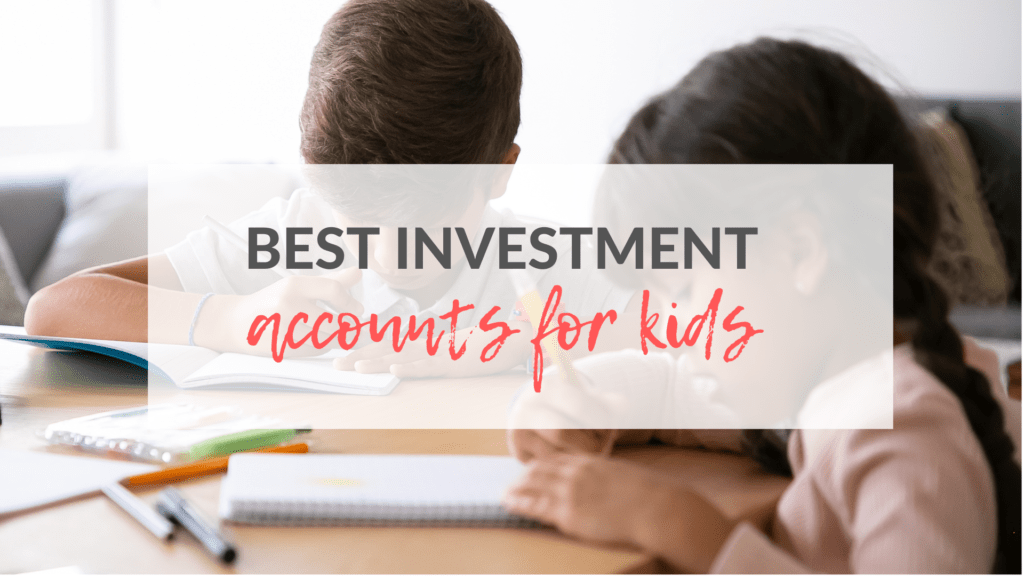
You’ve come to the right place to get the 5 best investment accounts for kids. You’re setting up your kids for success and they are so lucky to have you!
Related Content:
These accounts are not a one-size-fits-all so please do your research and pick the one that fits your situation the best. There are pros and cons to everything so make sure you understand what you’re doing.
Note: when it’s time to file for FAFSA, you’ll have to declare your assets or your minor’s assets, which could affect the amount of financial aid you’ll receive. Just keep that in mind and weigh your options.
Before doing anything. Learn the difference between these three account owner types:
- Owner: the person who owns the account and the assets in the account, a.k.a, the child
- Beneficiary: the funds in the account must be used for their benefit, a.k.a, the child
- Custodian: the person who manages the account because the child is under 18. Makes all the investment decisions and can only withdraw money to the benefit of the owner
Types of investment accounts
1. Roth IRA (Custodial Roth IRA)
An adult opens this account for a minor. A minor can only contribute their earned income (wages, tips, summer jobs). If a minor doesn’t have earned income, contributions can be made as a gift for the minor, but only in earned income.
Summary:
- Contribution: contribute up to the child’s total earned income of the current max contribution for the year
- Withdrawal: wait until 59.5 to withdraw
- Tax benefits: Tax-free growth
2. 529
A 529 is a tax-advantaged account to save money for a child’s education. The adult is the owner and the child is the beneficiary. Money can be used for education tax-free and beneficiaries can be changed to someone else or yourself if you decide to go to school. The contribution limit is $15k a year if single and $30k if married. Investments are chosen by your state and there’s no income limit to qualify.
Summary:
- Contribution: contribute up to $15k per year if single and $30k if married
- Withdrawal: only for educational expenses
- Tax benefits: Tax-free growth
3. Cordwell ESA
Cordwell ESA is also an education savings account. The difference is the contribution limit of $2k a year. There’s an income limit to qualify to make contributions: if you make over $110k or $120k if married, you cannot contribute to the account. You can choose the investment you like and growth and earnings are tax-free.
Summary:
- Contribution: contribute up to 2k per year
- Withdrawal: only for educational expenses
- Tax benefits: Tax-free growth
Related Content:
4. UTMA/UGMA
UTMA/UGMA: Uniforms Transfer to Minors Act and Uniform Gifts to Minors Act. They are laws that govern how custodial accounts are managed and taxed. These are taxable brokerage accounts but with a custodian. When the owner turns 18, ownership is transferred. There’s no contribution limit. The account lowers eligibility to qualify for financial aid. You can roll over to 529 later before applying to college.
Summary:
- Contribution: no limit
- Withdrawal: anytime
- Tax-benefits: no tax benefit – growth is taxed
5. Fidelity Youth Accounts
Fidelity Youth accounts are just like UTMA/UGMA accounts, but the minor is the owner of the account. It is open to teens from 13-17 years old. A parent/guardian must have an account to open a teen account and it’s very easy to set up. I got my younger siblings to create their accounts and now they get to choose their investments WITH GUIDANCE!
Summary:
- Contribution: no limit
- Withdrawal: anytime
- Tax-benefits: no tax benefit – growth is taxed
Next steps:
Talk to kids and encourage them to invest in their future. Educate them.




[…] 5 best investment accounts for kids […]